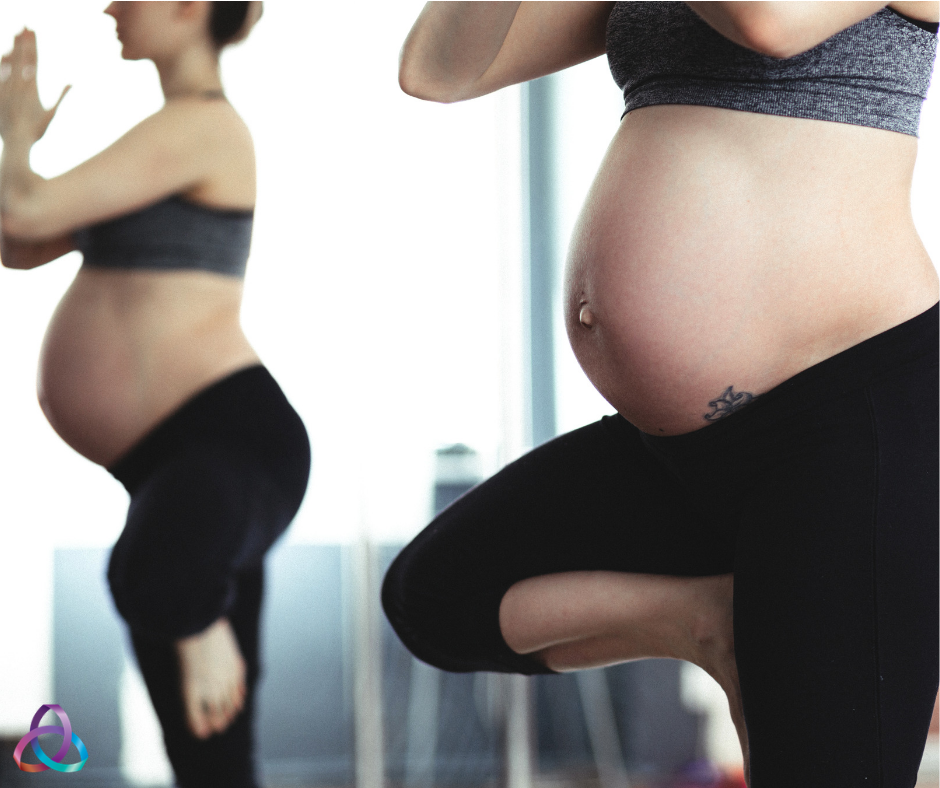Why is exercise in pregnancy so important? What are the goals of exercise in pregnancy? These are multifaceted questions. It could be to improve health markers, to improve cardiovascular endurance, flexibility or preparing for labour and delivery, to deal with lower back and pelvic girdle pain associated with pregnancy or to give a woman confidence in her own body.
There are so many benefits to exercise for both mother and baby. The benefits of exercising during pregnancy are well documented and include reducing high blood pressure, improving cardiac function, helps to prevent gestational diabetes, reducing weight gain associated with pregnancy, improves fitness, sleep and mood. The biggest and probably most relevant benefit is that labour is shorter, easier and less complicated in mothers who exercise when pregnant. In addition, the rate of emergency caesarean section is 25% less in women who exercised during pregnancy. Who wouldn’t want that!
There are some myths regarding exercise in pregnancy that are worth busting at this stage. Exercise in pregnancy does not increase the incident of miscarriage or birth defects. It does not increase the incidence of premature labour or membrane rupture. And it does not alter the quantity or quality of breast milk.
Even though exercise has a huge number of benefit some pregnant mothers will not be able to participate in exercise activities due to the following contra-indications which include hypertension, ruptured membranes, premature labour, persistent bleeding, incompetent cervix, poor foetal growth, placental disease and a history of miscarriage or premature labour. If the pregnant mother is suffering from any of the following they will need to have close supervision and have spoken to their medical specialist about exercising. These include extreme over or underweight, history of poor foetal growth or rapid labours, bleeding in early pregnancy, breech presentation, cardiac palpitations or arrhythmias and anaemia.
If a pregnant mother develops any of the following signs when exercising they should stop and seek medical advice. This includes vaginal bleeding, breathlessness prior to exercising, dizziness or headache, chest pain, muscle weakness, calf pain or swelling, decreased foetal movement or amniotic fluid leakage.
During pregnancy can be an ideal time to increase exercise starting slowly if you are new to physical activity. The recommendation for pregnant mothers new to physical activity is to begin gradually in 10-minute bouts of moderate intensity continuous exercise building up to a total of 150 minutes per week. This activity could be spread throughout the week. Moderate activity is described as ‘activity that makes you breath faster’ or at an intensity that increases breathing rate whilst still being able to hold a conversation. Pregnant mothers who are already active should maintain their activity levels however they may need to change the type of activity and continue to adapt this throughout the pregnancy. If you are unsure about exercising during pregnancy discuss it with your G.P., specialist or a Chartered Physiotherapist.
What type of exercise can be included in the recommended 150 minutes per week? Examples include short walks, cycling, climbing stairs, playing with children at home, dancing, pregnancy yoga or pilates classes, swimming. Class based exercise is great for mental and emotional support and can be good to mix in with a home based exercise program. Swimming is a great alternative if suffering from lower back pain or pelvic girdle pain. The buoyancy of the water supports the body and the compression of the water around the body in the pool can provide a decrease oedema, decrease the compression in the joints and reduce heart rate. However, be mindful of the slippery surface, getting in and out of the pool with changes in centre of gravity due to the bump, if the pool is warm making sure not to overheat and always hydrate!
Key take home points;
- No evidence of harm to mother or baby for healthy women resulting from moderate intensity physical activity during pregnancy
- Listen to your body an adapt. This is due to physiological changes during pregnancy that may cause some activities to feel different. Pregnancy will affect the frequency, intensity, type and amount of physical activity women can perform. A good rule is if it feels pleasant keep going and if it is uncomfortable stop and seek advice.
- Don’t bump the bump. If the exercise or activity places the pregnant mother at an increased risk of injury through physical contact it should be avoided. Therefore, no activity where there is a high risk of falls/trauma.
- Many pregnant mothers who have obstetric and medical complications can perform moderate intensity exercise however these recommendations are dependent on each individual after discussion with your medical specialist and additional monitoring maybe required.
- Keep cool, comfortable and hydrated. Due to changes and adaptations in how the body regulates heat in pregnancy it is recommended to stay hydrated, wear loose clothing and avoid excessive exposure to heat.
- Balance can be affected during pregnancy therefore pregnant women are at higher risk of falls. Balance exercises may help improve this however it is advisable to perform these stretches and balance activities with support.

